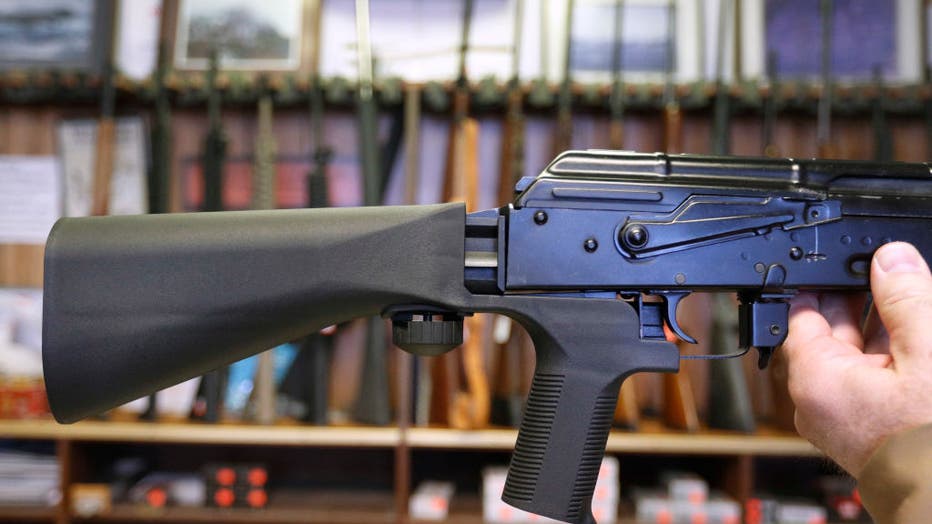What are bump stocks? Supreme Court weighs Trump-era ban on gun accessory

Washington becomes 10th state to ban assault weapons | LiveNOW from FOX
Washington is now the tenth state to ban the sale of semi-automatic rifles after Gov. Jay Inslee signed SHB 1240 into law. The Washington law blocks the sale, distribution, manufacture and importation of more than 50 gun models, including AR-15s, AK-47s and similar style rifles. These guns fire one bullet per trigger pull and automatically reload for a subsequent shot. Some exemptions are included for sales to law enforcement agencies and the military in Washington. The measure does not bar the possession of the weapons by people who already have them. FOX 13 Seattle reporter Matthew Smith joined LiveNOW's Andrewe Craft to discuss the new law. More LiveNOW from FOX streaming video
WASHINGTON - A federal ban on bump stocks previously imposed by former President Donald Trump is heading to the U.S. Supreme Court, which heard arguments on Wednesday in a case that tests the limits of government gun regulation.
What are bump stocks?
Bump stocks are accessories that replace a rifle's stock and get pressed against the shoulder.
A rifle fitted with the accessory uses the gun's recoil energy to rapidly and repeatedly bump the trigger, allowing the user to fire dozens of bullets in seconds, similar to an automatic weapon.
Bump stocks were invented in the early 2000s after a 1994 ban targeting assault weapons expired.
In 2010, the federal government approved the sale of bump stocks after the Bureau of Alcohol, Tobacco and Firearms and Explosives said weapons equipped with the accessory don't constitute an illegal machine gun under federal law.
Since then, more than 520,000 bump stocks have been in circulation by the time the Trump administration issued a ban on them in 2019.

A bump stock device (left) that fits on a semi-automatic rifle to increase the firing speed, making it similar to a fully automatic rifle, is installed on a AK-47 semi-automatic rifle, (right) at a gun store on October 5, 2017 in Salt Lake City, Utah
Why were bump stocks banned?
It happened after the deadliest mass shooting in modern U.S. history, when a gunman opened fire on a crowd of 22,000 people attending a country music festival in Las Vegas on Oct. 1, 2017.
Sixty people died and more than 850 were injured.
RELATED: Supreme Court split on federal bump stock ban challenged by Texas gun store owner
The gunman, later identified as 64-year-old Stephen Paddock, killed himself when authorities found his hotel room. He had 23 assault-style rifles including 14 weapons fitted with bump stocks.
After the deadly massacre, the ATF reconsidered the legality surrounding bump stocks and Trump ordered a ban on the devices, arguing they turned legal rifles into illegal machine guns.
What you need to know about the case
The Supreme Court took up the case after lower federal courts delivered conflicting rulings on whether the ATF could ban bump stocks.
The ban survived challenges before the Cincinnati-based 6th U.S. Circuit Court of Appeals, the Denver-based 10th Circuit, and the federal circuit court in Washington.
But the 5th U.S. Circuit Court of Appeals based in New Orleans struck down the bump stock ban when it ruled in the Texas case last year. The court's majority in the 13-3 decision found that "a plain reading of the statutory language" showed that weapons fitted with bump stocks could not be regulated as machine guns.
The Associated Press contributed to this story. It was reported from Los Angeles.

